What is Runoff?
Runoff is the movement of water over the land surface. It occurs when the ground is saturated, and excess water from rain, snowmelt, or other sources flows over the land instead of infiltrating into the soil. This excess water then travels over the land until it reaches a body of water such as a river, lake, or ocean.
Causes of Runoff
Runoff can be caused by various factors, including:
- Heavy rainfall
- Snowmelt
- Urbanization, which creates impervious surfaces such as roads and buildings
- Deforestation, which reduces the amount of water absorbed by tree roots
- Agricultural activities, such as over-irrigation or tilling of soil
Effects of Runoff
Runoff can have several impacts on the environment, including:
- Soil erosion, as flowing water can carry away topsoil
- Pollution, as runoff can pick up contaminants and carry them into water bodies
- Flooding, especially in urban areas with limited natural drainage
- Altered aquatic ecosystems, as excess nutrients from runoff can lead to algal blooms and other water quality issues
Ways to Mitigate Runoff
There are several strategies to reduce the impact of runoff, including:
- Creating green spaces and permeable surfaces in urban areas to allow water to infiltrate into the soil
- Implementing erosion control measures such as planting vegetation or installing silt fences
- Using rain gardens or retention ponds to capture and treat runoff water
- Practicing sustainable agriculture techniques to minimize soil disturbance and water usage
Study Guide
Here are some key points to remember about runoff:
- What is runoff?
- What are the causes of runoff?
- What are the effects of runoff on the environment?
- What are some strategies to mitigate the impact of runoff?
Be sure to understand the importance of managing runoff to protect ecosystems and water quality!
[Runoff] Related Worksheets and Study Guides:
.◂Science Worksheets and Study Guides Kindergarten. Our Earth
Coloring Worksheet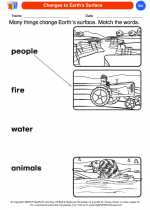 Changes to Earth's Surface
Changes to Earth's Surface  Coloring Worksheet
Coloring Worksheet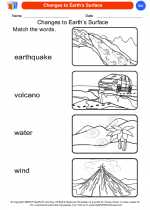 Changes to Earth's Surface
Changes to Earth's Surface  Coloring Worksheet
Coloring Worksheet Earth's Resources
Earth's Resources  Coloring Worksheet
Coloring Worksheet Earth's Resources
Earth's Resources  Coloring Worksheet
Coloring Worksheet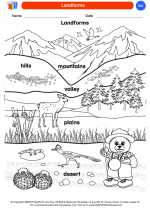 Landforms
Landforms  Coloring Worksheet
Coloring Worksheet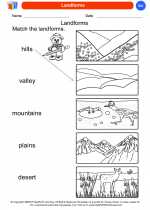 Landforms
Landforms  Coloring Worksheet
Coloring Worksheet Our Earth
Our Earth  Coloring Worksheet
Coloring Worksheet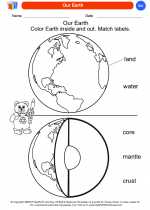 Our Earth
Our Earth  Coloring Worksheet
Coloring Worksheet Reduce-Reuse-Recycle
Reduce-Reuse-Recycle  Coloring Worksheet
Coloring Worksheet Reduce-Reuse-Recycle
Reduce-Reuse-Recycle  Coloring Worksheet
Coloring Worksheet Rocks
Rocks  Coloring Worksheet
Coloring Worksheet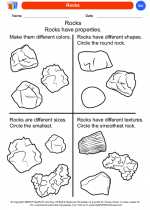 Rocks
Rocks  Coloring Worksheet
Coloring Worksheet Soil Beneath Our Feet
Soil Beneath Our Feet  Coloring Worksheet
Coloring Worksheet Soil Beneath Our Feet
Soil Beneath Our Feet  Coloring Worksheet
Coloring Worksheet Types of Fossils
Types of Fossils  Coloring Worksheet
Coloring Worksheet Types of Fossils
Types of Fossils  Coloring Worksheet
Coloring Worksheet Uses of Rocks & Minerals
Uses of Rocks & Minerals  Coloring Worksheet
Coloring Worksheet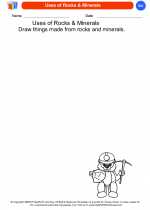 Uses of Rocks & Minerals
Uses of Rocks & Minerals  Coloring Worksheet
Coloring Worksheet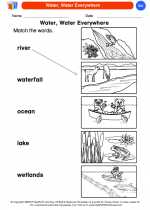 Water, Water Everywhere
Water, Water Everywhere  Coloring Worksheet
Coloring Worksheet Water, Water Everywhere
Water, Water Everywhere 

 Coloring Worksheet
Coloring Worksheet
 Coloring Worksheet
Coloring Worksheet
 Coloring Worksheet
Coloring Worksheet
 Coloring Worksheet
Coloring Worksheet
 Coloring Worksheet
Coloring Worksheet
 Coloring Worksheet
Coloring Worksheet
 Coloring Worksheet
Coloring Worksheet
 Coloring Worksheet
Coloring Worksheet
 Coloring Worksheet
Coloring Worksheet
 Coloring Worksheet
Coloring Worksheet
 Coloring Worksheet
Coloring Worksheet
 Coloring Worksheet
Coloring Worksheet
 Coloring Worksheet
Coloring Worksheet
 Coloring Worksheet
Coloring Worksheet
 Coloring Worksheet
Coloring Worksheet
 Coloring Worksheet
Coloring Worksheet
 Coloring Worksheet
Coloring Worksheet
 Coloring Worksheet
Coloring Worksheet
 Coloring Worksheet
Coloring Worksheet

The resources above cover the following skills:
EARTH AND SPACE SCIENCE (NGSS)
Earth and Human Activity
Students who demonstrate understanding can:
Communicate solutions that will reduce the impact of humans on the land, water, air, and/or other living things in the local environment.